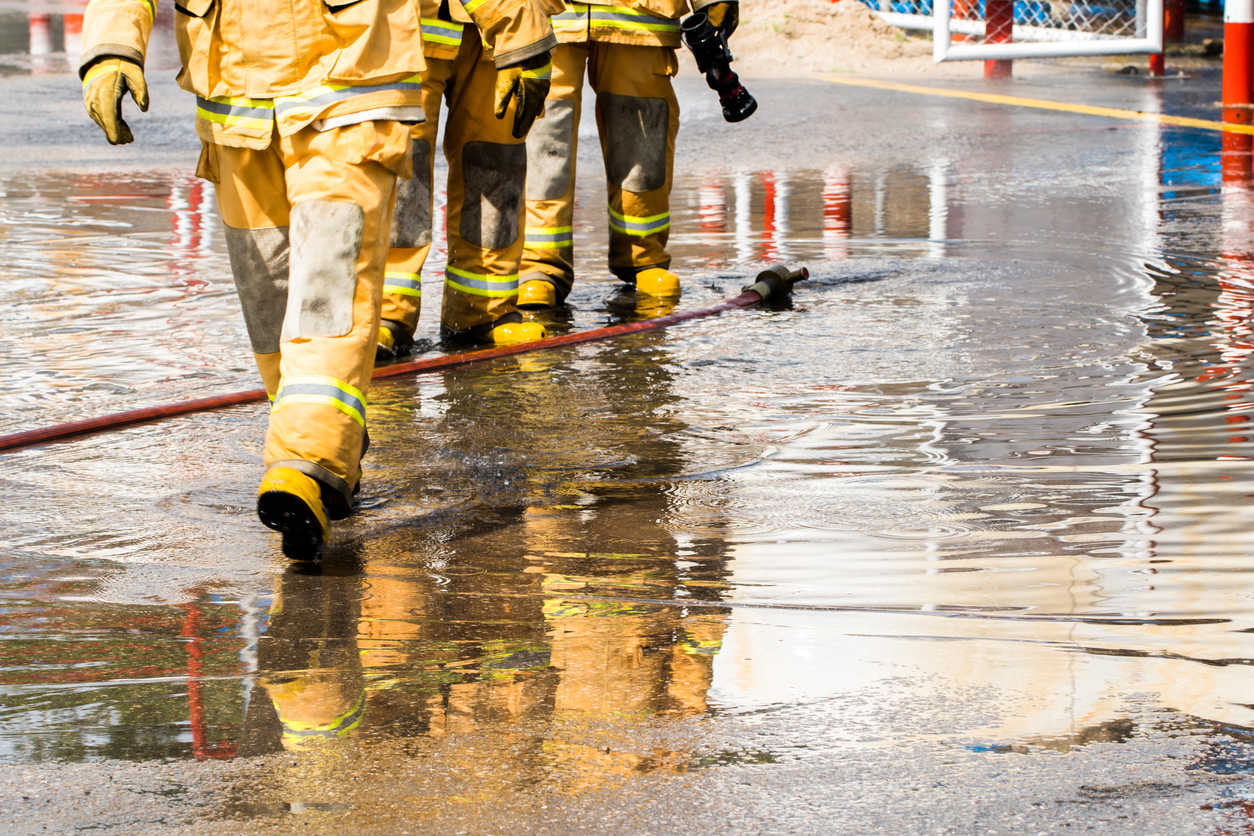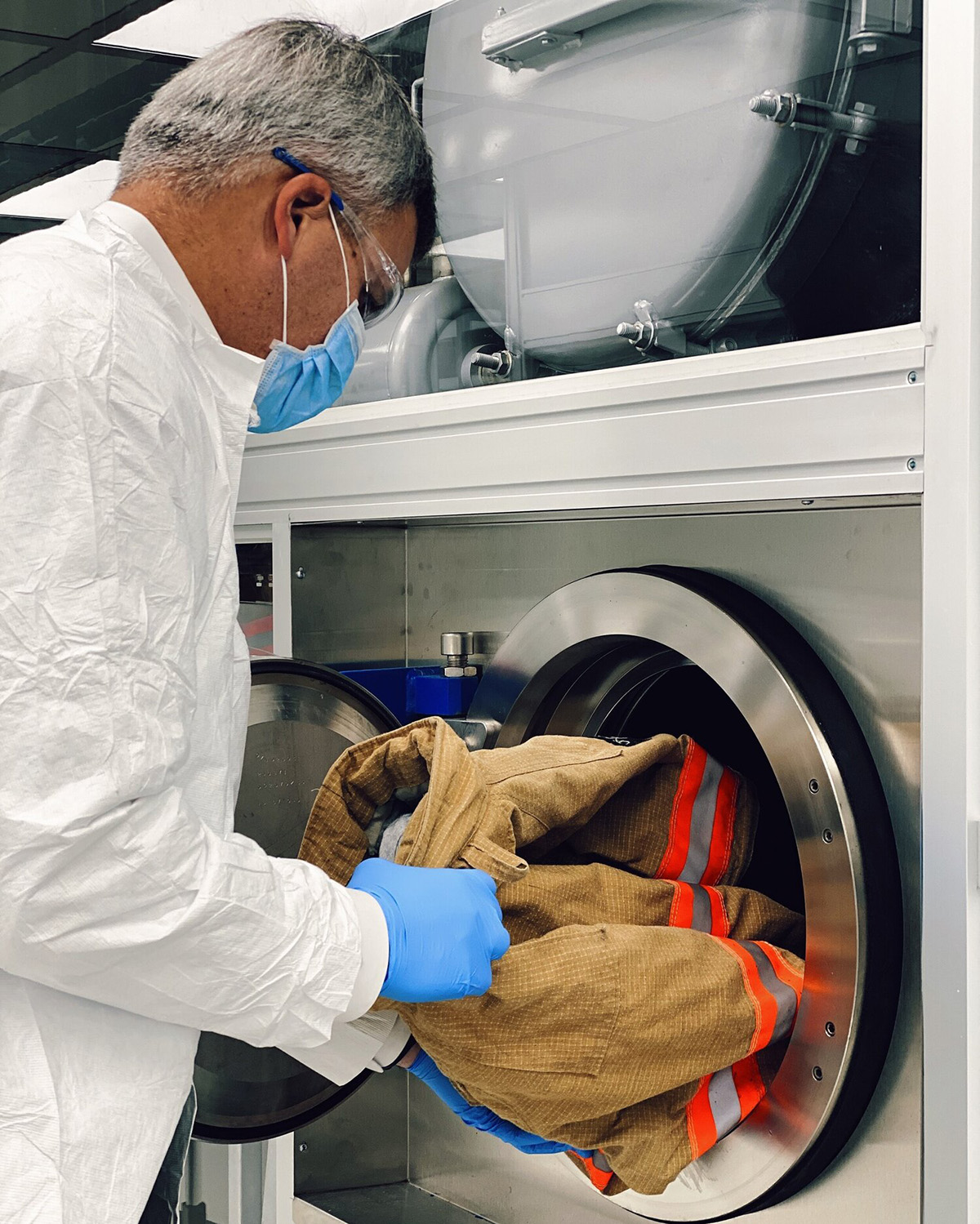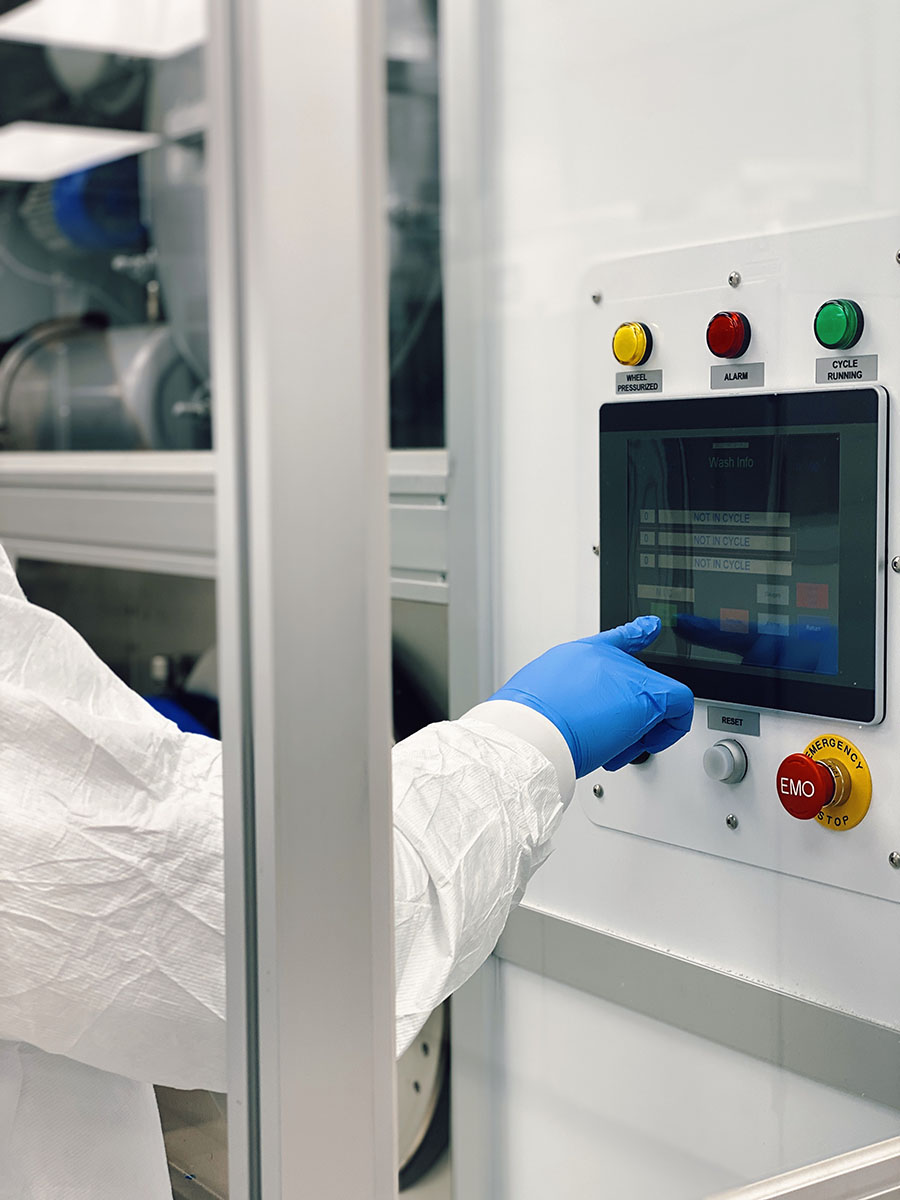By: Emergency Technical Decon Team
Firefighters know that contaminants don’t stay at the fire scene. Harmful substances from smoke, soot, and debris embed themselves in turnout gear, leading to long-term exposure risks even after the fire is out.
On-scene gross decontamination—quickly rinsing off gear at the fireground—has become a widely accepted practice to reduce immediate exposure. While this step is important, it is not enough to fully remove toxic substances like PFAS, PAHs, heavy metals, and biological hazards.Without a full-cycle decontamination strategy, firefighters remain at risk of exposure long after their shift ends.
The Role of On-Scene Gross Decon
On-scene gross decontamination involves quickly rinsing off gear with water, wipes, or decontamination sprays at the fireground before firefighters remove their PPE. The goal is to remove visible soot and surface contaminants before transport back to the station.
This process is a critical first step, but it has serious limitations:
- It only removes surface contaminants—toxins embedded in fabrics remain untouched.
- Water alone does not break down or remove PFAS and PAHs.
- Gear remains heavily contaminated once it dries, leading to prolonged exposure.
- It does not prevent cross-contamination when gear is transported back to the station.
Without proper decontamination, harmful substances remain trapped in PPE, exposing firefighters each time they wear contaminated gear.
What On-Scene Decon Fails to Remove
Various studies have shown that even after gross decontamination, firefighter turnout gear still contains dangerous levels of:
- PFAS (Per- and Polyfluoroalkyl Substances) – Chemicals used in turnout gear that persist in fabric and have been linked to cancer and hormone disruption.
- PAHs (Polycyclic Aromatic Hydrocarbons) – Carcinogenic compounds found in smoke and soot that embed deeply into gear fibers.
- Heavy Metals – Lead, cadmium, and arsenic from burning materials that cling to PPE.
- Volatile Organic Compounds (VOCs) – Harmful airborne chemicals that can be absorbed into turnout gear and off-gas later.
- Biological Hazards – Bloodborne pathogens and other contaminants encountered in rescue operations.
Because many of these substances cannot be seen or smelled, firefighters may not realize their PPE is still contaminated after on-scene decon.
How Departments Can Implement a Full-Cycle Decontamination Strategy
To truly protect firefighters from exposure, departments must move beyond gross decon and implement a full-cycle cleaning strategy that ensures PPE is properly decontaminated before reuse.
Step 1: On-Scene Gross Decon (First Line of Defense)
- Rinse off gear using low-pressure water and decontamination wipes.
- Avoid using high-pressure hoses, which can drive contaminants deeper into gear fibers.
- Remove and bag contaminated gear in a sealed transport container.
- Change into clean station wear before getting into apparatus vehicles to prevent cross-contamination.
Step 2: Advanced Decontamination with Liquid CO2+ Cleaning
- Immediately send PPE for professional decontamination using an advanced system like Liquid CO2+ cleaning.
- Liquid CO2+ removes 99% of toxic contaminants, far exceeding the effectiveness of traditional washing.
- Unlike water-based methods, it does not degrade gear or introduce hazardous wastewater into the environment.
- Gear is returned dry and ready for immediate use, reducing downtime.
Step 3: Storage & Handling Best Practices
- Store clean and contaminated gear separately to prevent re-exposure.
- Never take PPE home or leave it in personal vehicles, where off-gassing can occur.
- Encourage routine medical screenings for firefighters to track long-term exposure risks.
Why Liquid CO2+ Cleaning Is the Best Solution for Full Decontamination
While on-scene gross decon is an important first step to reducing toxin exposure, only advanced decontamination methods can fully remove embedded toxins from turnout gear.
Liquid CO2+ cleaning is the most effective way to eliminate contaminants from turnout gear without damaging protective fabrics.
- Removes 99% of PFAS, PAHs, and heavy metals—far exceeding traditional washing methods.
- Prevents cross-contamination by ensuring gear is fully decontaminated before its next use.
- Preserves gear integrity, extending the life of turnout gear by up to 40%.
- Produces no hazardous wastewater, keeping fire departments compliant with new PFAS regulations.
- Meets and exceeds NFPA 1851 and 1850 standards for PPE cleaning.
At Emergency Technical Decon (ETD), we provide Liquid CO2+ decontamination services to ensure firefighter PPE is truly clean and safe for reuse. Fire departments across the country are upgrading their decon procedures beyond gross decontamination to protect their crews from long-term exposure risks.
Is your department doing enough to ensure firefighter safety? Contact ETD today to learn how our Liquid CO2+ cleaning technology can support your department’s full-cycle decontamination strategy.



